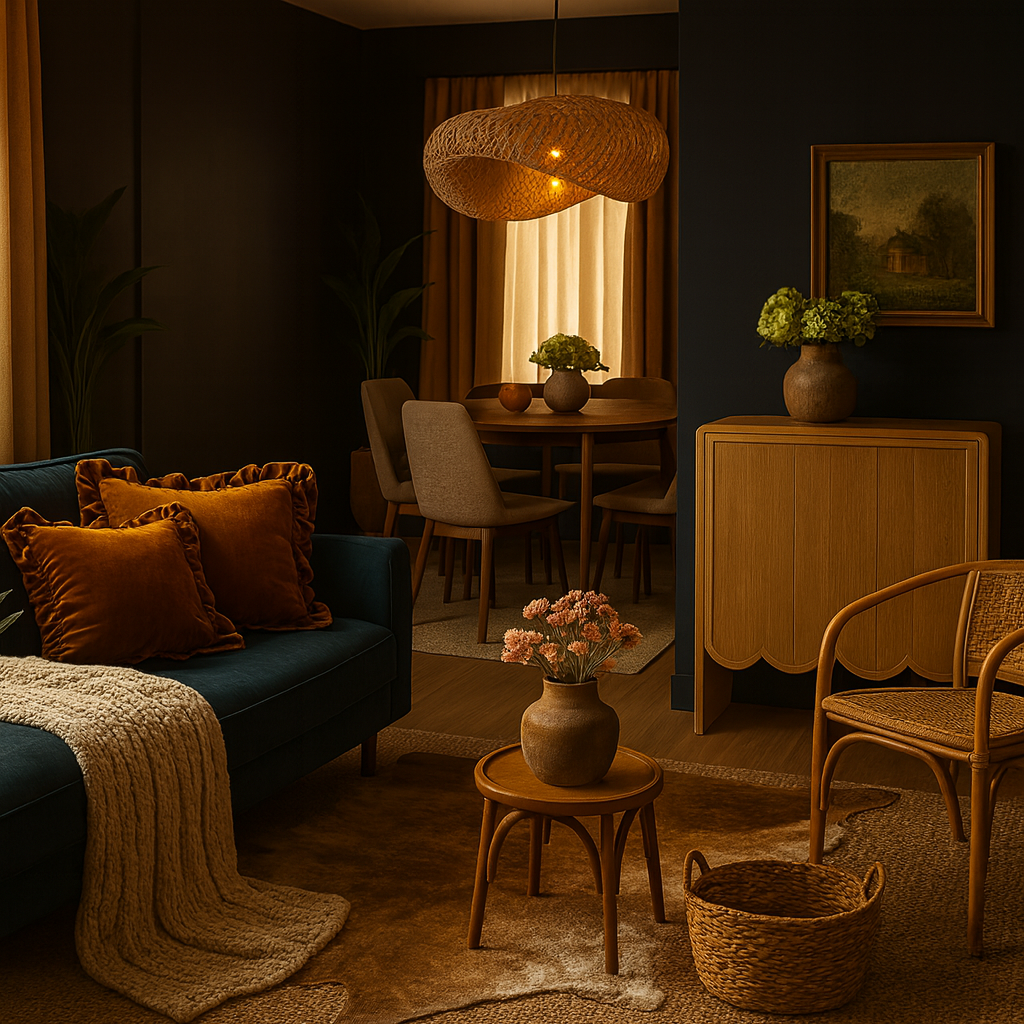How to Add Texture to Your Space Like a Designer
When people think of texture, they usually picture a chunky throw tossed on a couch. Cute, but you can go so much further. Texture is the secret ingredient that makes a room feel layered, lived in, and let’s be honest, expensive. Even if your budget isn’t.
Here’s how to master it.
Layer Textiles
Think beyond the sofa throw. Layer rugs, pile cushions in varied fabrics like these velvet pillow covers or this linen throw pillow, then drape a soft knitted throw blanket over a chair. Even swapping in a caramel-colored knit throw instantly warms up a neutral sofa.
Why this works: Different fabrics reflect and absorb light differently, which tricks the eye into seeing more dimension.
Mix Wood Finishes
Instead of matching every wood tone, mix light oak with walnut, or rough-hewn beams with smooth cabinetry. Try pairing a walnut round coffee table with a scalloped sideboard or a curved buffet for a layered, collected feel.
Pro tip: Aim for 2–3 wood tones max so it feels curated, not chaotic.
Play with Wall Treatments
Limewash paint, grasscloth wallpaper, wood paneling, or beadboard can transform plain walls into a tactile feature. For a quick refresh, try this grasscloth contact paper or frame out a wall with these pre-cut wall moldings for an instant architectural upgrade.
Extra commentary: Walls are your biggest real estate for texture, and they don’t have to shout to be impactful.
Use Natural Materials
Stone, rattan, clay, jute, and woven baskets bring organic irregularities that feel timeless. Style a console with these weathered vases, layer in a terracotta jug, or add storage with these rattan fruit baskets. A paper and wood textured lampcan also bring a warm, diffused glow.
Why this works: Natural materials age gracefully, developing a patina that adds character over time.
Bring in Plants
Plants aren’t just color, they’re texture. A faux fern has soft, feathery leaves, while a faux fiddle leaf fig offers a more sculptural look. For something unexpected, add these warm-toned artificial flowers to a vase for year-round color.
Pro tip: Mix leaf shapes and sizes for variety.
Contrast Hard and Soft
Pair structured furniture with something tactile and cozy. A leather sofa feels more inviting with a chunky knit throw, and a clean-lined bed frame instantly softens with rumpled linen bedding. The mix keeps a space approachable instead of stiff.
Why this works: Opposites create balance and help avoid a flat, one-note look.
Experiment with Metal Finishes
Brass, matte black, brushed nickel, polished chrome—each reflects light differently. Mix a warm brass lamp with matte black pulls, or layer in a polished chrome accent to catch the eye.
Extra commentary: The trick is to keep metals in the same temperature family so the mix feels intentional.
Think About Flooring
Ground the room with a jute cotton area rug for natural texture, then layer a faux cowhide rug on top for contrast. This combination works especially well to break up large open spaces.
Pro tip: Layering rugs is one of the easiest ways to define zones in a room.
Play with Light and Shadow
Texture comes alive under the right lighting. A linen shade pendant creates soft, diffused light, while a woven bamboo pendant or a wood pendant light cord kit casts playful shadows that highlight dimension.
Why this works: Light emphasizes highs and lows in texture, making everything feel richer.
Accessorize Intentionally
Details matter. Stack books and top them with a bead garland, place a matte ceramic vase next to a glossy tray, or set out a raw stone object to catch the light. Accessories like this are easy to swap seasonally, so you can keep your textures fresh.
Extra commentary: The right accessories are the finishing touch that makes a space feel designed, not just decorated.
Shop the full look on Amazon
Final Word
The key is balance. You want enough contrast to create interest but not so much that it feels chaotic. Think of it like composing music: the mix of high notes, low notes, and pauses is what makes it harmonious.





















